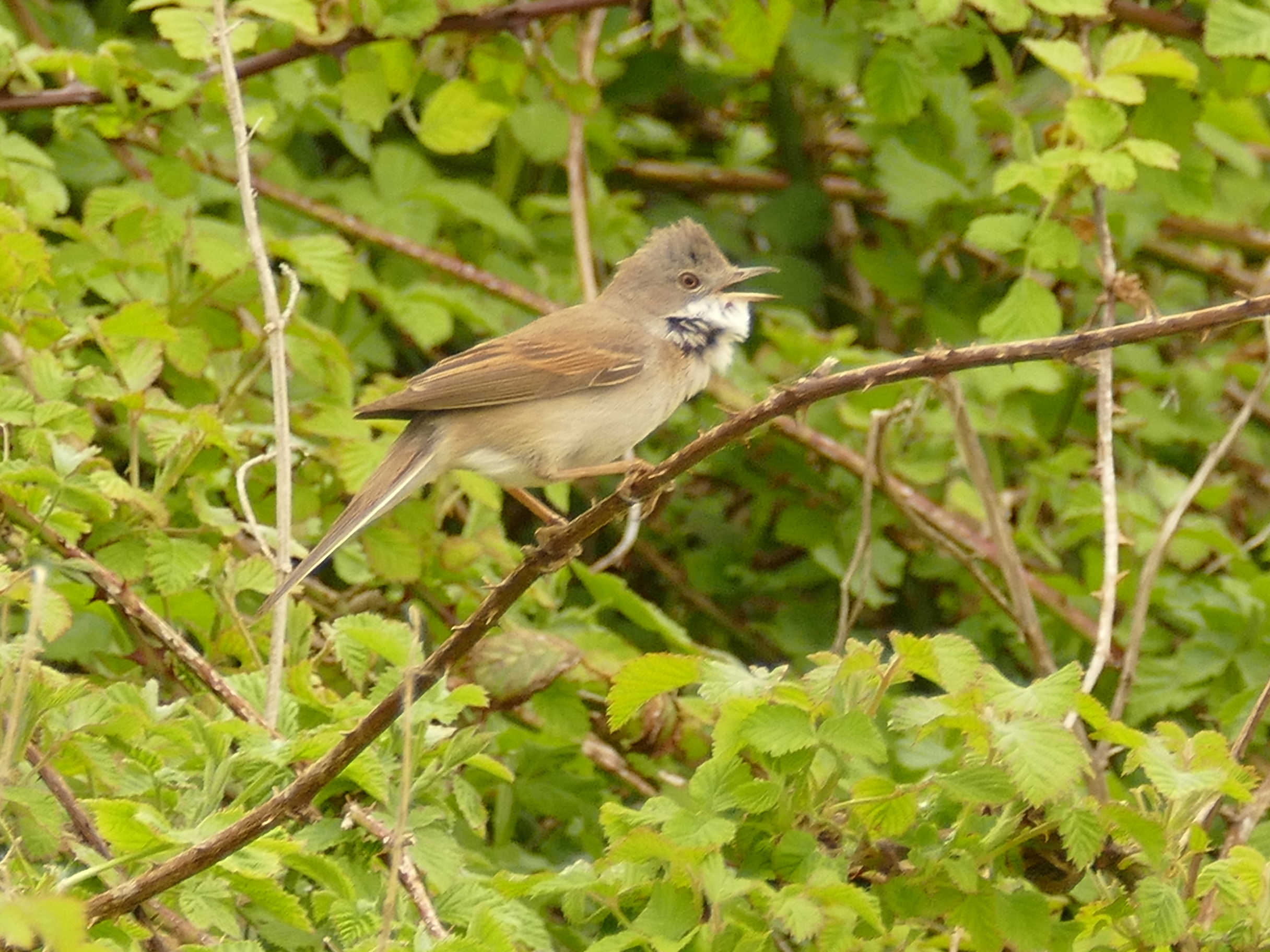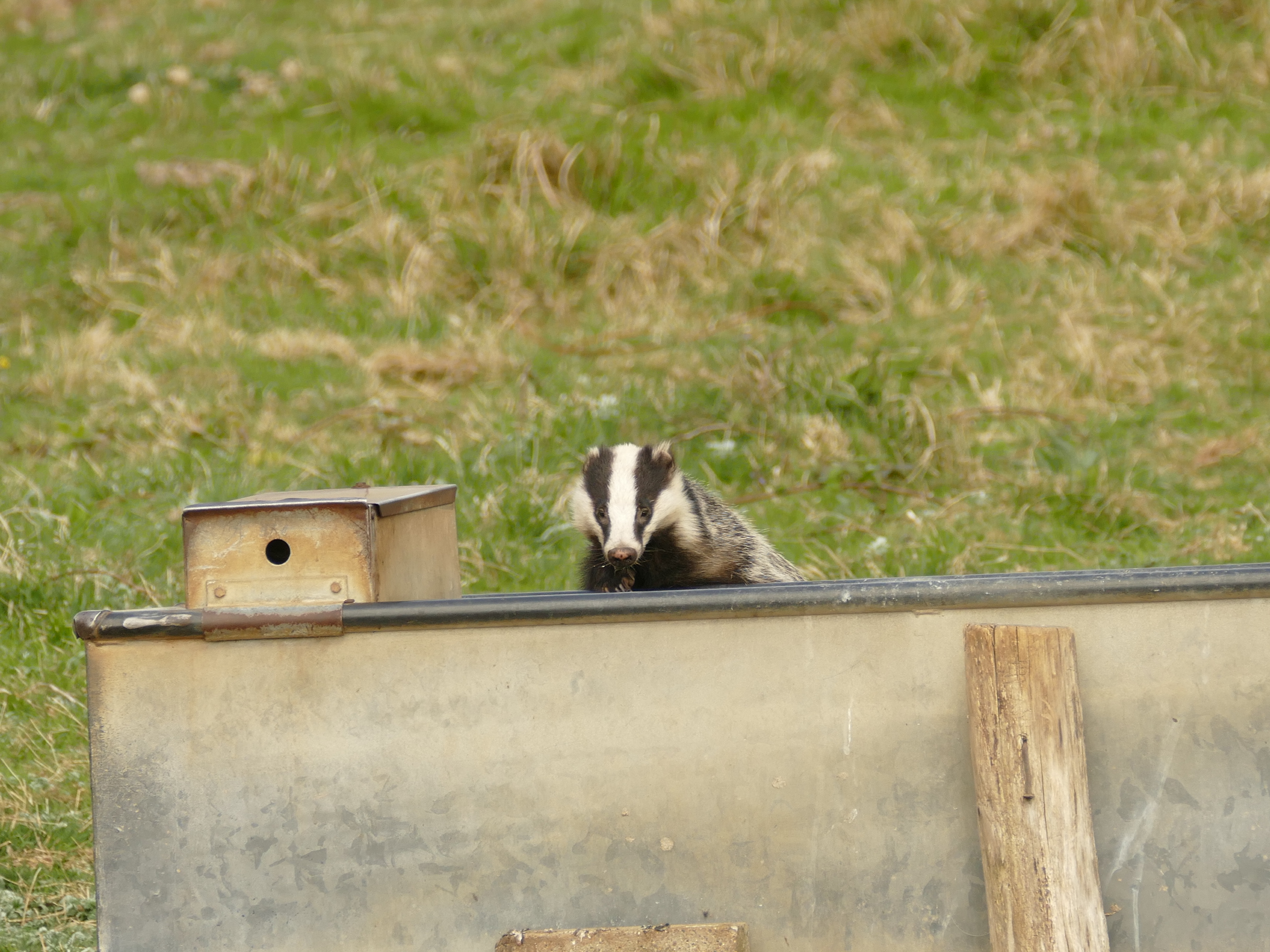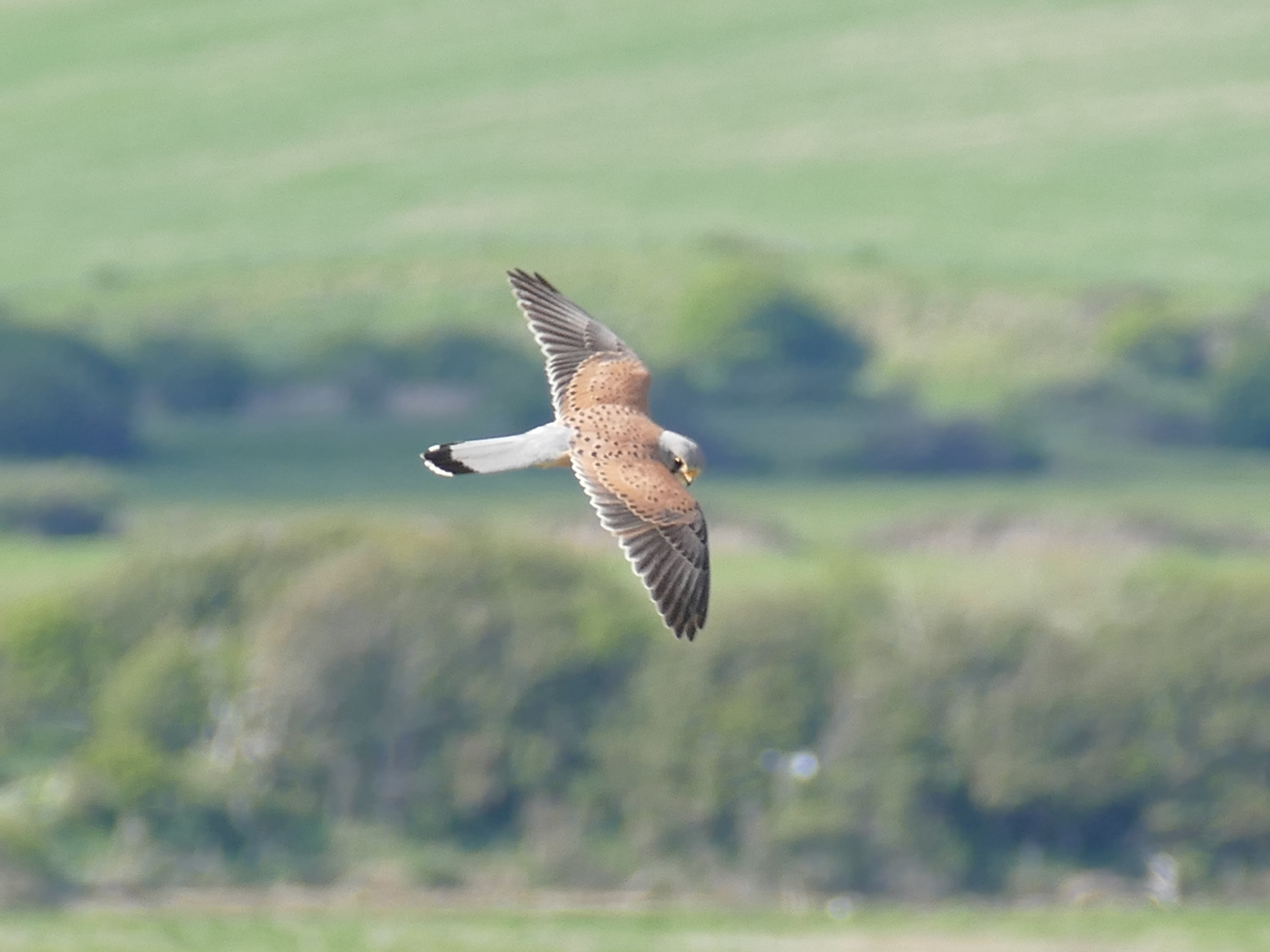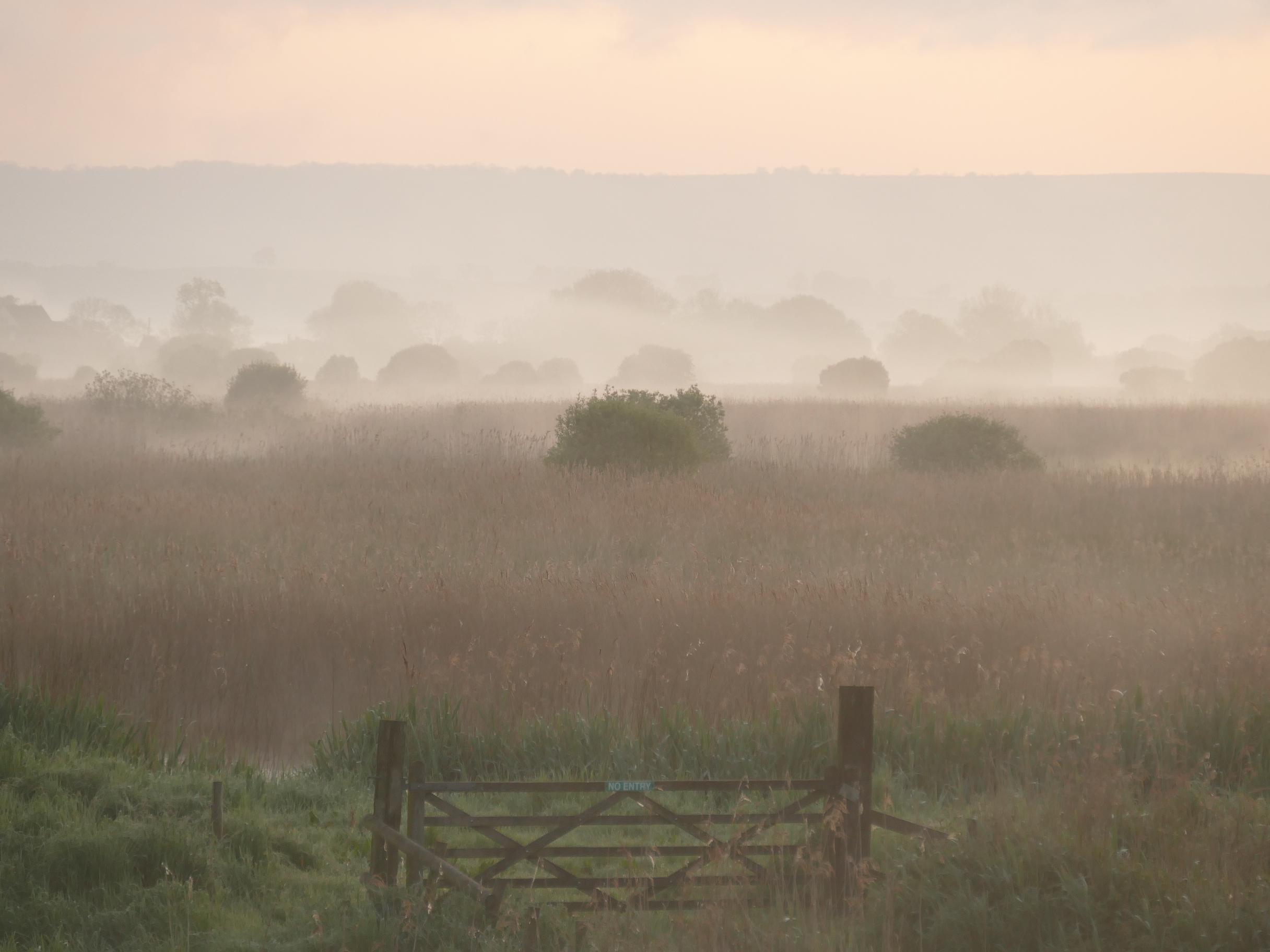
The first site to be visited was Farlington Marshes managed by Hampshire and Isle of Wight Wildlife Trust. The site comprises of some great scrubby habitat, wet grassland, reed lined freshwater pools and estuarine creeks.

The first site to be visited was Farlington Marshes managed by Hampshire and Isle of Wight Wildlife Trust. The site comprises of some great scrubby habitat, wet grassland, reed lined freshwater pools and estuarine creeks.
On this day it was a bit gusty so any songsters would be keeping their heads down, however close views of a couple of Black Tailed Godwits, Avocets and a White Wagtail made up for it as they fed on the fringes of the freshwater pools.
Getting out on to the seawall the tide was a long way out but on its return inwards, small flocks of Linnets punctuated the lower horizon over the marsh as they struggled against the wind, out on one of the tidal creeks a mixed flock of Dunlin, Turnstone and Ringed Plover fed intermittently as they scanned the skies for predators.

"Outside the harbour walls a sandy spit provided a roost for 30 + Terns, Common and Sandwich mixed. As a footnote the whole site was security protected by, would you believe, Kestrel Security Services?"
Looking back inland a trio of Spoonbills came into view on one of the many freshwater pools with Teal, Shoveler and Gadwall close by. On the wader list there were many Avocets and on one pool close by a couple of Greenshank which had recently arrived, huh! the things you see when you leave the camera in the car. But the best was yet to come, up went the call, unmistakeable Whimbrel and there they were 11 of them out on the mud, but it got better as there close by was a small flock of summer plumaged Grey Plover, a more dapper dresser you never will see. Talking to a couple of locals the reserve would normally turn up its treasures, but today’s wind kept their heads down.
Onwards to RSPB Portsmouth who meet on a Saturday night, it was to be a talk on the best of Scotland, its Wildlife, Landscapes and Folklore. With Matt Coumbe as group leader, they are very progressive, with various links into the local community they are looking to get their message out across a wide range of sectors.
He said attendance numbers were still down from pre Covid levels, but many people had said they were coming back once they felt more comfortable about the situation, but interestingly a lot of new members had joined due to reaching out into the community.
As we got chatting, he revealed he was a lead volunteer on the Mary Rose exhibition, so he invited us for a free personal tour. It was just incredible, the salvage, artefacts, the stories behind it. I would urge anyone with an interest in the Tudor period to just go and have a look you will not be disappointed. The day in the dockyard was completed with the newest additions to the Royal Navy fleet both at berth alongside one another. HMS Queen Elizabeth and HMS Prince of Wales, aircraft carriers of the highest specification.
Moving on Matt had recommended Titchfield Haven a nature reserve with a variety of habitats managed by Hampshire County Council. Easily split into two areas either side of the river Meon, the management area extends well inland of the reserve. With all the facilities on site it is a must visit site. On this day the wind had dropped, the sun was out, and the birds were singing, a grass snake was even seen basking on the path side.
Common Terns, a calling Cuckoo, Garden Warblers, Cettis and a wide range of waders were seen, it is a site that has an opening time of 9am and a closing time of 5pm due to some security issues in the past. In the Meon harbour close by it was fascinating to watch the strength, power and tenacity of some Turnstones who did what their name suggested they did. Outside the harbour walls a sandy spit provided a roost for 30 + Terns, Common and Sandwich mixed. As a footnote the whole site was security protected by would you believe Kestrel Security Services.

Moving on eastwards into Sussex and early morning stop at Selsey Bill for an hours sea watching proved fruitful with many groups of Whimbrel, Sandwich Terns and odd Skuas of both Great and Arctic variety being seen. Meeting a few of the locals we were invited to sit with them, scanning left and right, conversation continued with a couple of them remembering John Badley from his RSPB days at Hayling island, he is now manager for the RSPB wash reserves. The Birding community is so closely linked.
Moving on to Pagham Harbour another RSPB site, what an area, Sandwich, Common and Little Terns. Mediterranean gulls in abundance, big numbers of waders on passage with Bar Tailed Godwits in full summer plumage alongside Whimbrel, Greenshank, Dunlin, Redshank and others.

Some remedial work was being completed to the fences around the Tern nesting area prior to breeding, so the sight and sounds were unbelievable. Close by Medmerry nature reserve was not visited due to a lack of time but was actioned for a future visit.
In Brighton the local group was very much a collective effort predominantly by a group of hard-working ladies, this was to be the first lecture I had given in a hall with a working windmill on the side. Again, Covid was influencing their attendance numbers with some local members not attending due to positive tests.
Whilst in this area a few local sites were visited mainly as part of the South Downs way and the national park, but in one area I left feeling down beat questioning some attitudes toward nature and the countryside mainly centred on loud music being played via a Ghetto blaster and dogs being given free rein literally when it was ground bird nesting season.
Hampshire left such a lasting impression that I am now adding it to the Greenspaces list of Tours in the future, possibly for Spring 2022, watch this space.
Best AI Website Maker